We want to give our children the best. The best food, toys, and, of course, clothes. What fabric should clothes, bed linen, and towels be made of and how to choose the best fabric correctly - this is below.
Fabric requirements for children
Clothes and other textiles for a child should not only decorate him, although this is undoubtedly very important, but also meet the main requirement: do no harm. Therefore, any fabric that comes into contact with delicate baby skin should be like this:
- soft;
- cozy;
- natural;
- safe;
- does not cause allergies or irritations;
- colorfast, does not fade after the first wash.
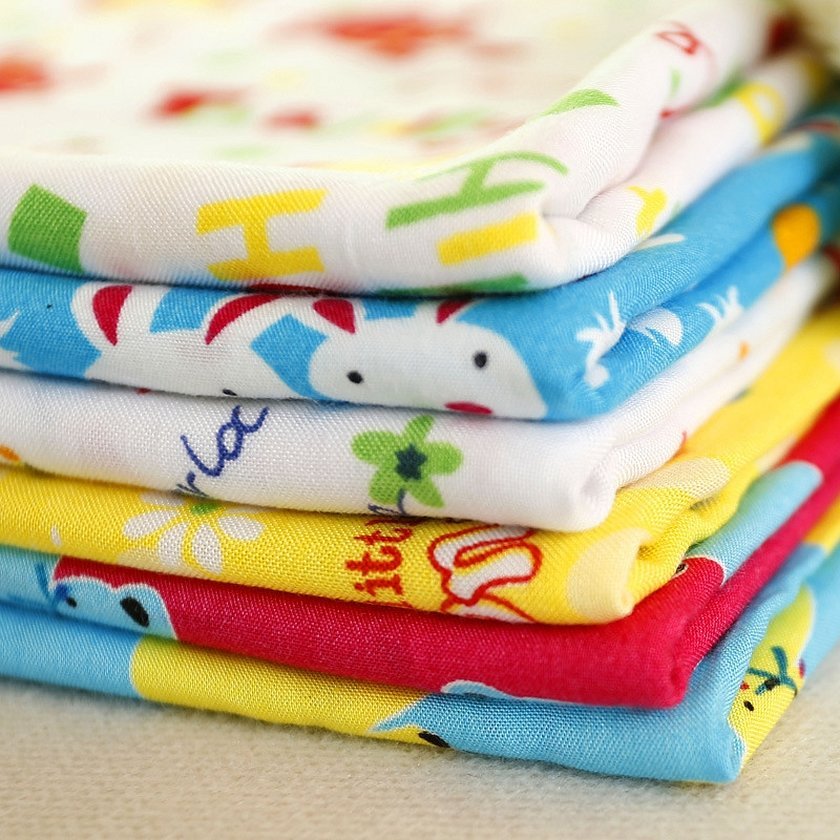
Durability of fabric for children's clothing is a necessary, but not decisive factor when choosing. On the one hand, children grow quickly, and clothes will soon become small. On the other hand, children's clothes are washed very often and it is desirable that they retain a decent appearance for at least 1-2 seasons.
Important information! Natural fabrics, in addition to their undoubted advantage over synthetic ones, have a disadvantage - they wear out quickly. To give them strength and durability, elastane and nylon are added to them. Therefore, it would be rational to use natural materials in clothing that comes into contact with the skin every day, and mixed or artificial fabrics - for outerwear and clothing of the second and third layers.
Types of children's textiles
Chintz is an inexpensive thin cotton fabric. Due to its low density, it is used only for the smallest children. Chintz clothes for a schoolchild will not last long. They mainly sew blouses, bonnets and baby shirts.
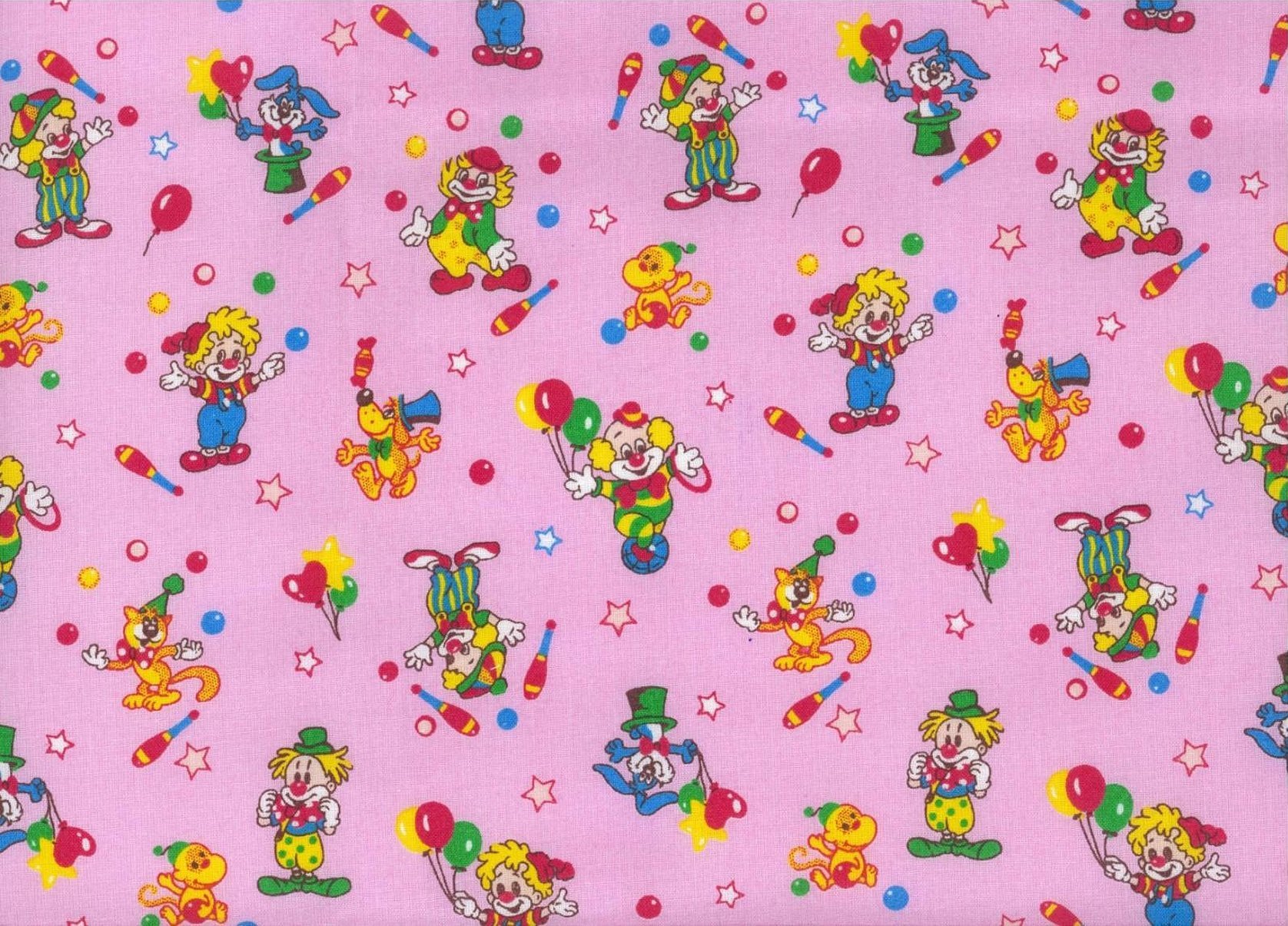
Flannel is a soft fabric with a soft fluffy pile. It can be cotton or wool in composition. Most often it is used for clothing and textiles for babies - they sew diapers, blouses and overalls.
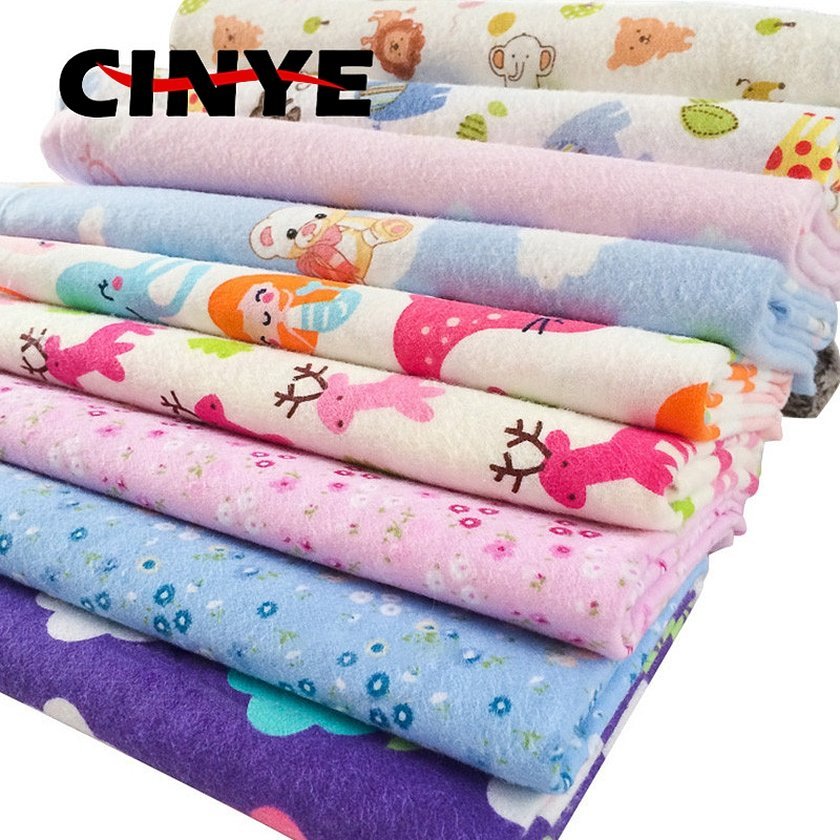
Terry cloth is a natural cotton or linen material with long loops on one or both sides. The most popular use is for robes and towels.
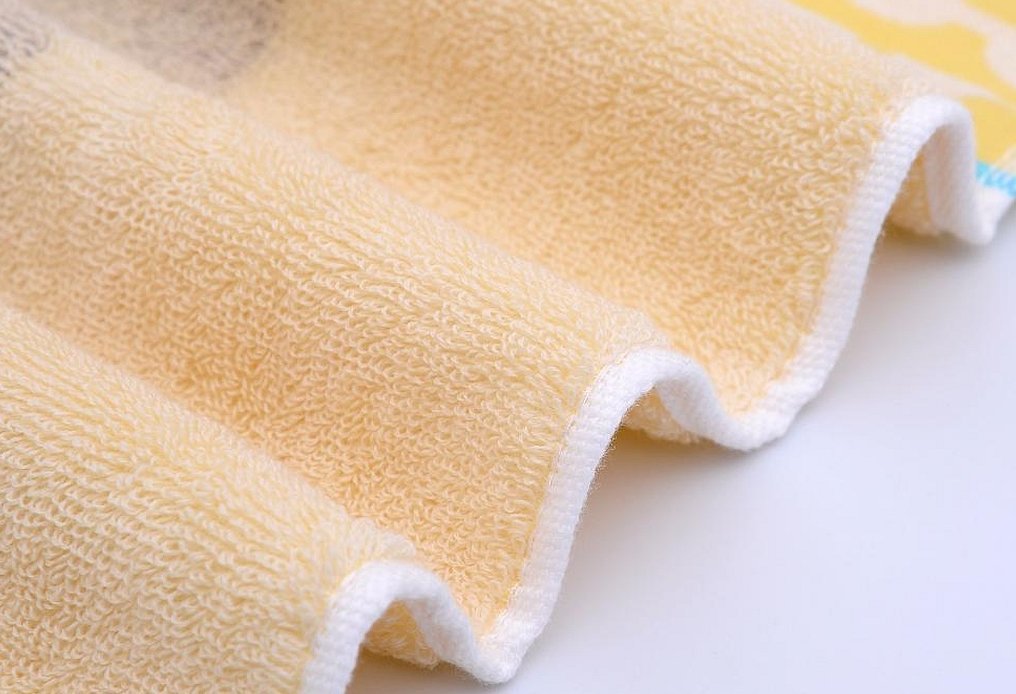
Knitwear of different types: jersey, interlock, footer, ribana, capiton - suitable for sewing casual clothes for summer and winter. Knitwear is used to make blouses, overalls, turtlenecks and sweatshirts.
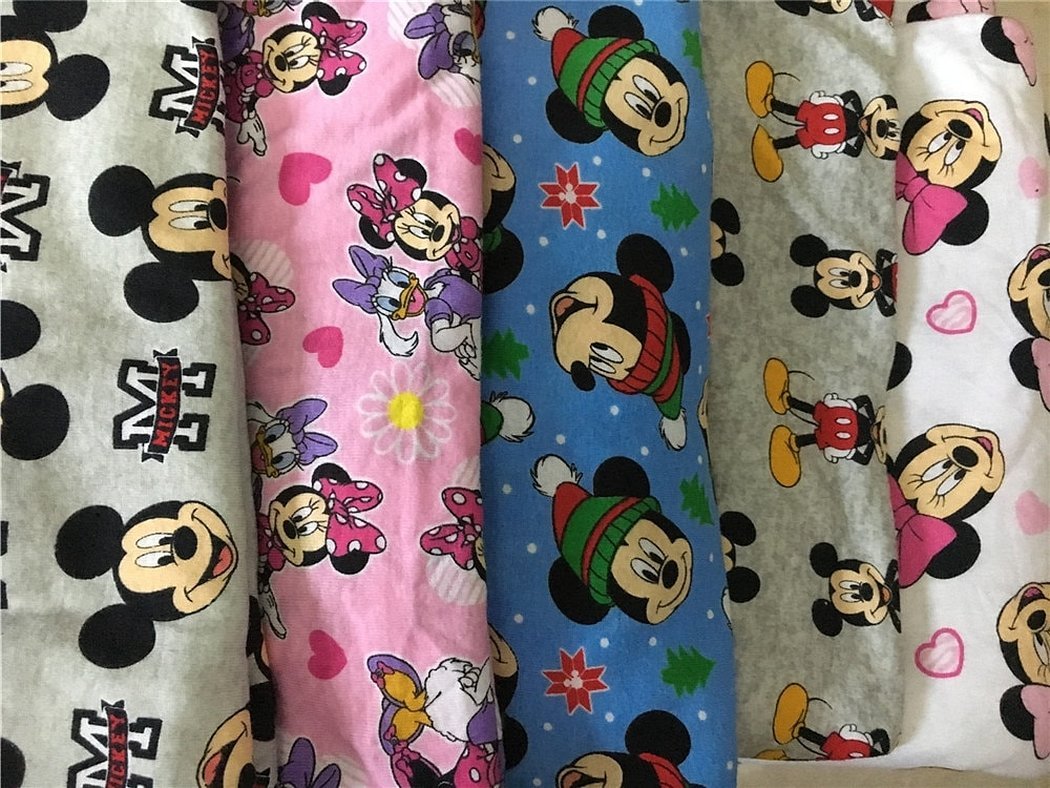
Fleece is a soft fabric made from viscose and polyester fibers. Its composition is suitable for children from 5 years old, the fabric is not for babies. It is used to make tracksuits, sweaters and hats.
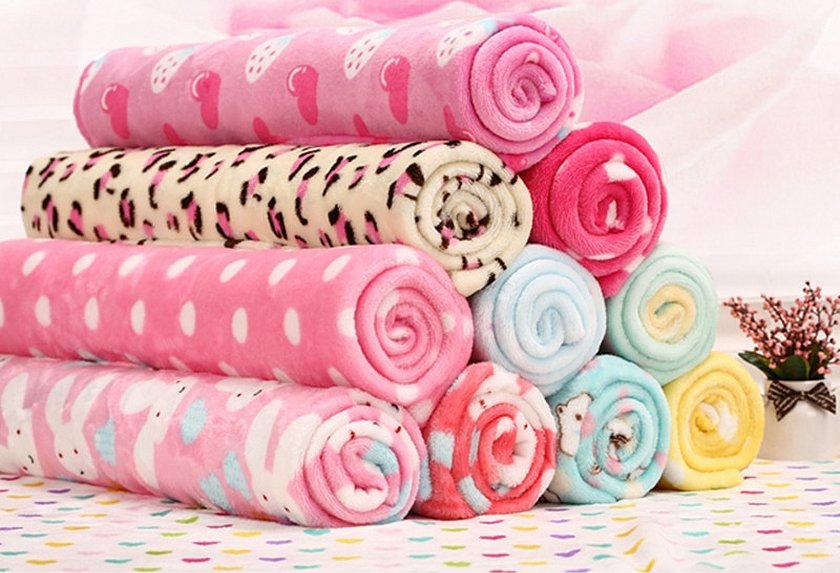
VelSoft or microfiber is a synthetic fabric that resembles velvet in appearance. The material is safe for children, as it does not cause irritation and does not accumulate dust. Very light and warm fabric, which is ideal for dressing gowns, pajamas, socks. VelSoft blankets and bedspreads are in great demand.
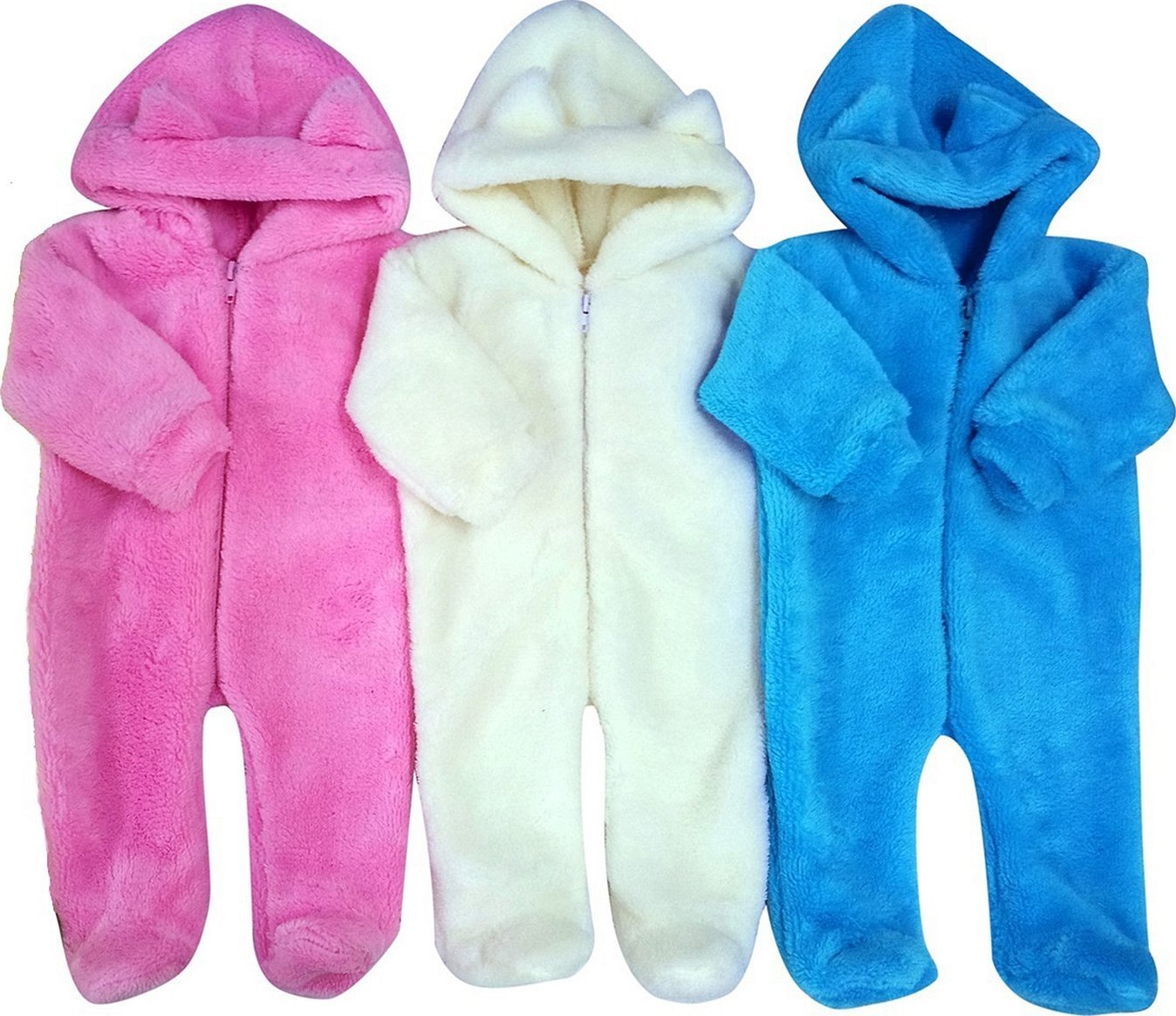
Wool is a natural material that is widely used in children's clothing. But it has a drawback - it causes discomfort when in contact with the skin. In cold weather, wool socks are best worn over cotton socks.

Acrylic is a synthetic substitute for natural wool. It does not prickle or irritate the skin, but it is long-lasting and does not deform.
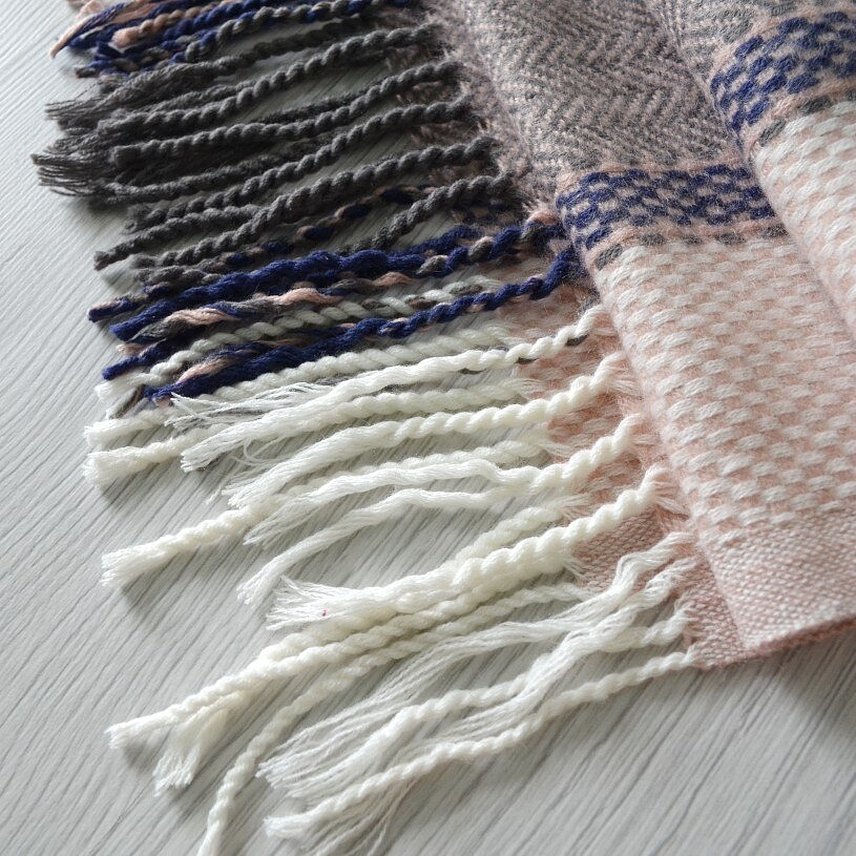
Knitted cotton velour is used for sewing elegant festive clothing or for decorative elements of children's products.
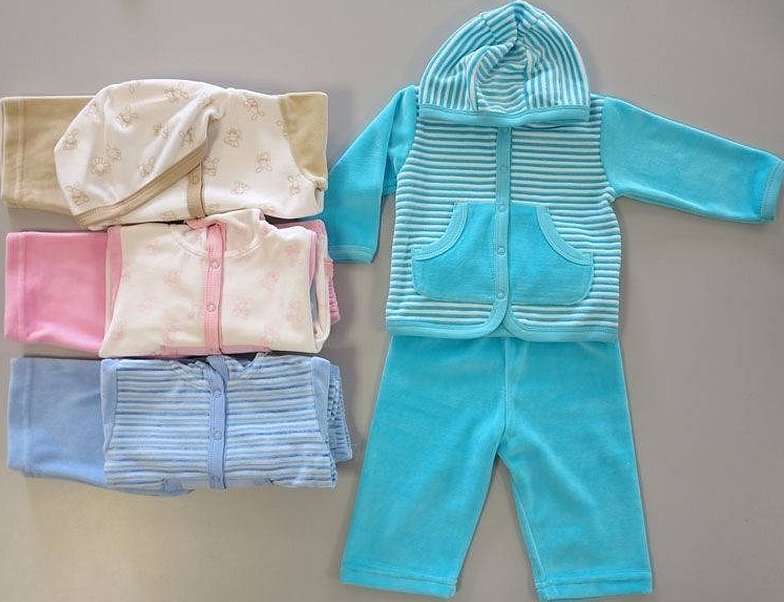
Viscose is a synthetic material with cotton-like properties. It is used to make T-shirts, skirts and dresses for children with bright prints.
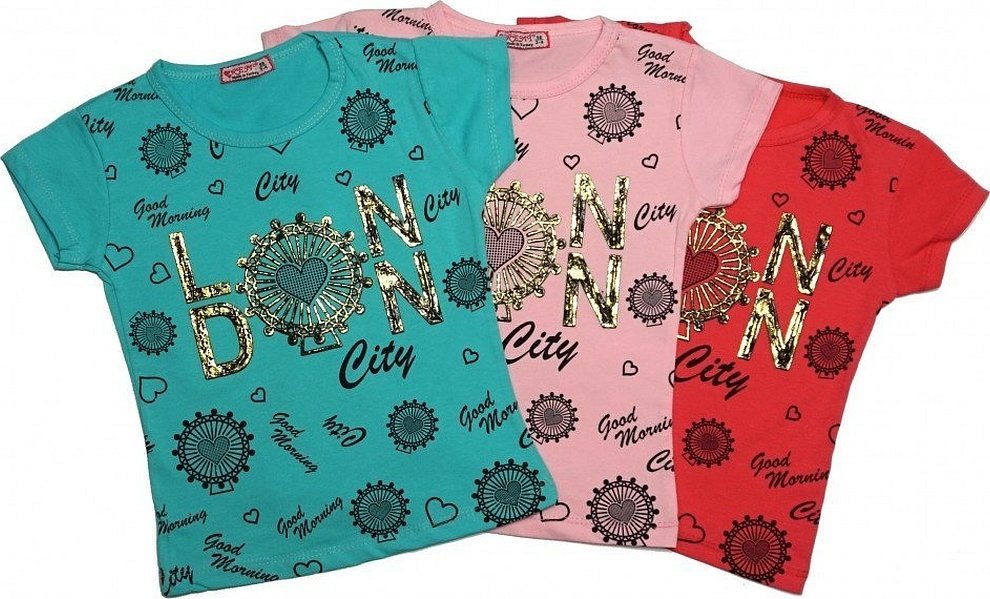
Requirements for fabrics for newborns
Baby fabrics for newborns must meet even higher requirements. The main condition is 100% natural composition, without impurities.
Important information! The first layer of clothing for a newborn - diapers, undershirts, blouses, pants, bodysuits, bonnets - should be completely natural, soft and comfortable for the child.
All fancy decorations - lace, embroidery and bows - are best left until a more mature age. As a last resort, you can decorate the discharge envelope or jumpsuit, with which the baby's skin will definitely not come into contact. The best material for newborn clothing is cotton.
Cotton
Cotton products made of chintz, flannel and cambric are perfect for babies. The fabrics are easy to wash and iron. They have different densities, so you can choose the appropriate material for diapers and underwear. Their main common properties: they do not cause allergies and allow baby skin to breathe.
Clothes made of natural fabrics must be sewn using threads made of natural fibers. Seams in caps and baby clothes must be on the outside. Manufacturers are prohibited from using chemical reagents for dyeing and bleaching fabrics. Hygroscopicity must be more than 14%, air permeability index from 150 units.

Linen is also a natural material that allows baby skin to breathe. But the linen fibers from which the fabric is made are a bit rough and hard, even when processed. Therefore, linen clothing for newborns can only be worn as a second layer.
An important point is the choice of not only everyday and festive elegant clothes, but also fabric for children's bed linen.
The best natural fabrics for bed linen
Fabric for children's bed linen must meet the following requirements:
- softness;
- hypoallergenic;
- hygroscopicity;
- air permeability;
- wear resistance;
- calm colors in pleasant tones.
Please note! The following natural materials meet these requirements: cotton, linen, bamboo.
Cotton
Cotton fabrics meet all the requirements, but have a number of disadvantages:
- wrinkling;
- shrinkage during washing;
- deformations with frequent use.
The best types of cotton fiber material that can be used for bedding are:
- Satin is a durable and dense material made of twisted cotton threads with a special satin weave. It has a smooth, shiny surface that is very pleasant to the touch. The high density of the material provides good wear resistance for bed linen that is regularly washed. The colors do not fade, they remain bright. Your baby will definitely enjoy sleeping in a bed made with linen with a 3D pattern of cartoon characters. The smooth surface of satin bed linen will be comfortable even for a newborn.
- Calico is a cotton fabric made from plain weave threads. Less dense than satin, but still popular with buyers. It tolerates multiple washes well, but the colors lose their brightness a little. Over time, pellets may appear on the surface of the sheet, so it is better not to put calico linen in the crib for the smallest children.
- Ranfors is a very dense material made from a large number of twisted threads, which has excellent hygienic and thermoregulatory properties.
- Chintz is a cotton fabric with a rare plain weave. The fabric is soft and smooth, but does not tolerate washing well. It is easily deformed and becomes thinner. It can compete with satin and calico only due to its low cost.
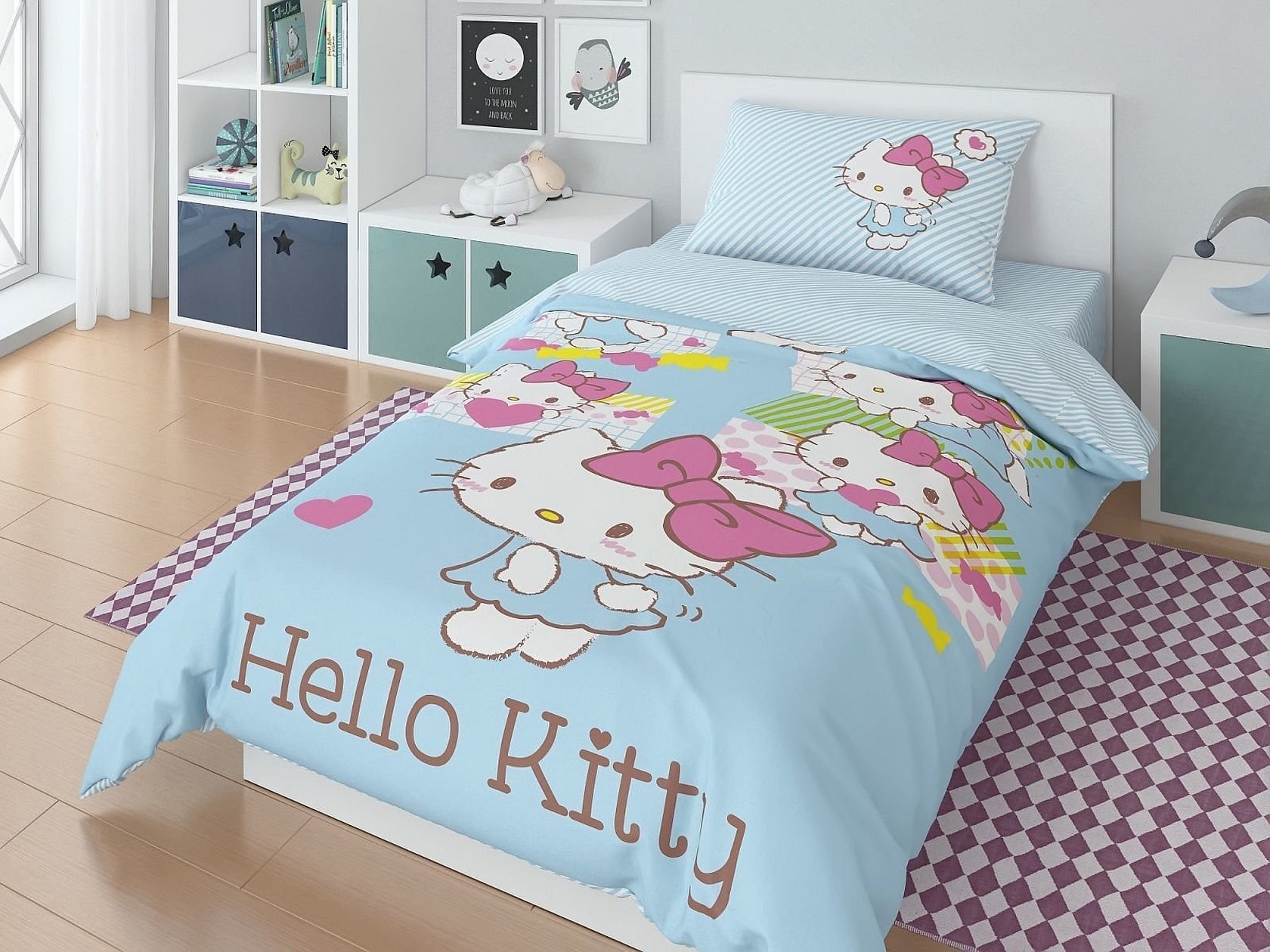
Flax
Usually linen fabric is a bit rough, hard to the touch. But modern manufacturers have learned to make it soft and pleasant to the body. It is from such processed linen that you can buy bumpers for a baby crib or a bedding set of a sheet and duvet cover.
Bamboo
A modern, completely hypoallergenic material of mixed composition. Usually consists of equal parts of bamboo and cotton fibers. Bamboo threads are obtained by mechanical or chemical processing of bamboo stems and leaves. The second name of the material is "bamboo flax" or "bamboo silk". In addition to the properties that all natural materials have, bamboo fabric has several additional advantages:
- antibacterial effect;
- non-slip surface;
- does not absorb foreign odors.
Important! The only disadvantage is the high cost.
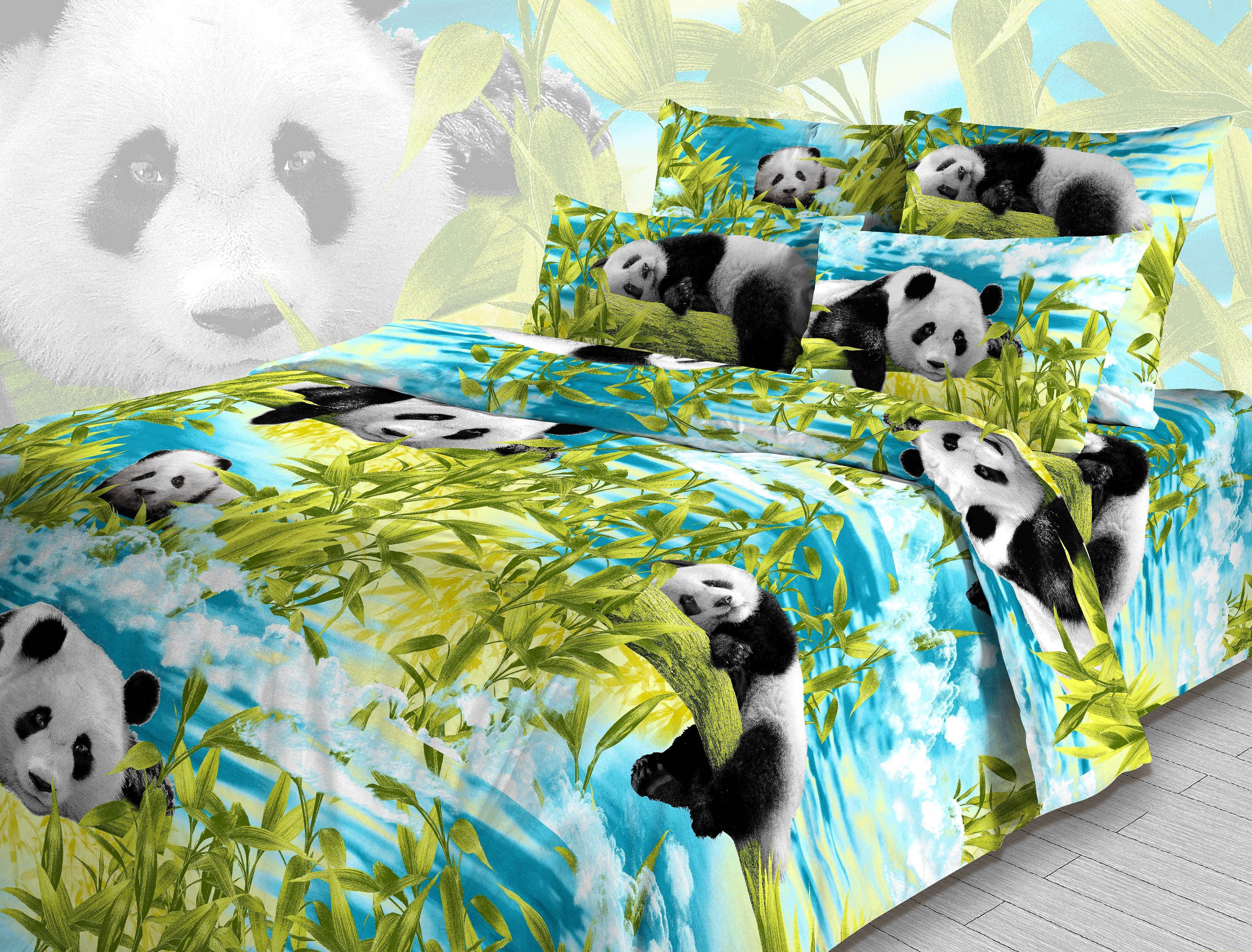
Reviews
Marianna, 27 years old
"I'm expecting a baby now. And although they say it's a bad omen to buy everything in advance, I go shopping and look at clothes and bed linen. I want everything to be ready after the discharge. There's a huge selection of clothes in stores for every taste and color, but I'm looking specifically at cotton items. I think a newborn should only have natural clothes that won't irritate the skin."
Ludmila, 44 years old
"For my youngest child, who is 3, I try to buy clothes only from natural fabrics. Mostly cotton and wool. But for my eldest daughter, you can already buy viscose and fleece. But of course, only for outerwear, not for panties and T-shirts. I still only buy cotton underwear, but the children have never had any problems with their skin."
With the huge range of fabrics available, choosing the right clothes from safe materials in a store is not difficult. The main thing to remember is that they need to be washed before the first use.




